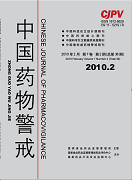|
|
Study on Human Resources and Basic Drug Uses of Community Health Service Center in Cities and Rural Hospitals in Liaoning Province
MA Hui, CHENG Gang, WANG Yu-xin, XIAO Ai-li, WANG Jia-yi, GENG Feng-ying, YANG Yue-ming, JIN Dan, YANG Hua, DU Xiao-xi
2010, 7(2):
86-91.
Objective The report examines and compares the current situations of the two different doctor structures in the two categories of medical and health institutions. Methods The research is performed based on the multistage sampling survey of five different community health service centers of five cities and five rural hospitals in Liaoning province. The research is concerned about the general situation of health workers and all the doctors' overall quality and quantity, structure and their use of drugs, using spss13.0 statistical analysis. Results The average numbers of health personnel of community health service centers of cities and rural hospitals in Liaoning province are 51.8 and 23 respectively, which are higher than the national average. The average numbers of doctors are 17.4 and 13 re-spectively, which are well above the national average level. But the structure of medical staff, nursing and pharmacy technicians is imbalanced. There is a great difference of medical staff who received college and technical school education between rural hospitals and community health services. It is a common phenomenon for basic medical and health in-stitutions to stress medical treatments and ignore preventions. The number of public health workers is low. There are less traditional Chinese medicine doctors. Doctors from basic medical and health institutions lack knowledge of adverse drug reaction and there exists irrational drug use. Conclusion The community health service centers and rural health institutions in Liaoning province have plenty of human resources, but the structure of health personnel should be adjusted and the allocation of human resources should be improved. In addition, knowledge of adverse drug reaction should be strengthened and rational drug use training should be performed.
References |
Related Articles |
Metrics
|
